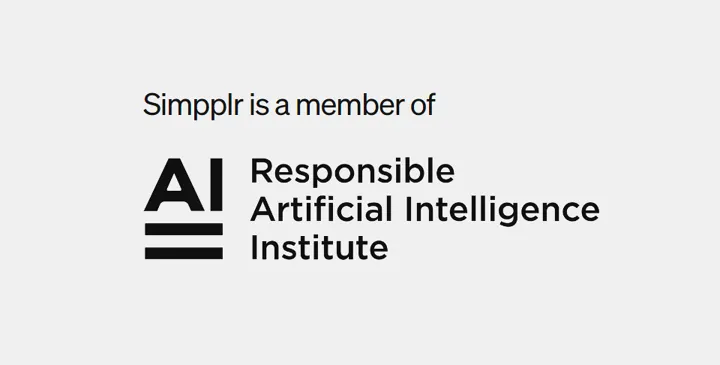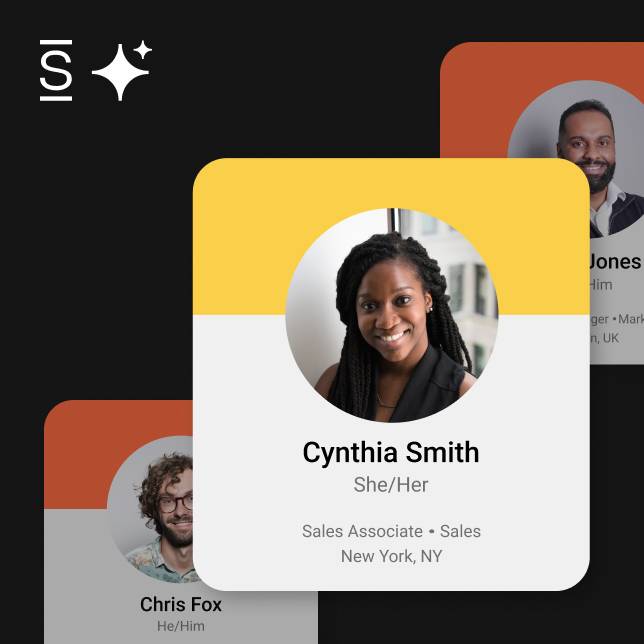More than a year after the launch and wild popularity of ChatGPT, one thing has become clear: GenAI is smart and fast, but it’s only effective when you know how to use it. The wrong ChatGPT for IT prompts produce buggy, often inaccurate replies. The right inputs, on the other hand, can help IT pros accelerate their workflow and quickly troubleshoot problems.
Below, we take a look at how to write the best prompts for a variety of IT workflows. We also provide 50 examples of ChatGPT for IT prompt templates you can use to work more efficiently with GenAI.
Table of contents: ChatGPT for IT
- 1 The power of AI for IT workflows
- 2 ChatGPT prompt writing tips and best practices
- 3 Limitations of ChatGPT for IT
- 4 Best ChatGPT prompts for IT support
- 5 Best ChatGPT prompts for IT troubleshooting
- 6 Best ChatGPT prompts for IT training
- 7 Best ChatGPT prompts for IT security
- 8 Best ChatGPT prompts for intranet management
- 9 Using generative AI to save time and money
- 10 How Simpplr can help
Discover how to break the IT dependency cycle
The power of AI for IT workflows
Forbes recently reported that 97% of business owners believe AI will heavily influence their workflows within the next year. Why? Likely because they are witnessing the advanced capabilities and potential of artificial Intelligence.
ChatGPT can be used alone or with other AI-powered tools to dramatically streamline productivity by tackling repetitive administrative tasks, creating IT support and training content, troubleshooting IT issues and more.
For example, Simpplr’s powerful AI capabilities across the platform drive their leadership in the EX platform space. In the 2023 Gartner® Critical Capabilities for Intranet Packaged Solutions report, Simpplr scored highest among IPS vendors for the employee services use case, demonstrating its ability to “serve and satisfy employees, and make them aware of policies and procedures, through business and IT service and self-service … [to] reduce employee support costs while improving efficiency.”
Simpplr purposefully leverages virtual assistance powered by generative AI to help employees get quick access to important information and tools. Simpplr AI features a conversational interface that converts indexed results into human language with a 90% rate of response accuracy. The virtual assistant covers a lot of ground — from processing updates to helping manage incidents across the corporate application stack — and it can all be handled in one place. Simpplr AI enables IT teams to:
- deliver immediate, personalized responses to employees, eliminating the need for additional clicks and extensive searching for answers.
- provide a highly personalized employee experience by delivering customized and relevant responses that meet specific needs, while taking into account an employee’s location, department and other relevant attributes.
- connect software systems for HR, IT, Legal and others into a unified, searchable, digital experience, gathering real-time information and responding to user needs in a predictive manner.
- reduce IT reliance, streamline operations, slash support costs, and boost employee self-service with automated workflows that reduce administrative overhead and repetitive requests.
- empower employees with efficiency through a unified point of entry that integrates chat bot experience and knowledge bases, aggregates policies and documents from across the enterprise, and provides seamless access to all employee information needs.
- improve employee satisfaction by quickly and accurately anticipating user needs during live chat interactions using historical data analysis and pattern recognition.
And it’s all incredibly secure. As a member of the Responsible Artificial Intelligence Institute, Simpplr delivers a secure, private instance for every customer, ensuring no customer data leaves the platform nor is stored or used to train any other system. The information customers enter cannot be accessed by any outside party.
When used as a standalone tool, ChatGPT for IT requires careful human supervision.
In order to get the most out of the Simpplr platform’s AI capabilities, it’s important to have a clear understanding of ChatGPT. Users should always keep in mind a key limitation of AI — ChatGPT is not a human brain, and does not produce original thoughts. Rather, it relies on pattern recognition and retrieval. It can make mistakes, and it is limited as to the ways it accesses information.
Users can improve generative AI results by using carefully crafted prompts to help guide what ChatGPT produces.
Explore more about using generative AI for increase productivity
ChatGPT prompt writing tips and best practices
Effective ChatGPT prompts are typically highly specific and detailed. To generate quality results, users should clearly explain the problem they are trying to solve, the audience, any relevant or anticipated error messages (for troubleshooting prompts), and express whenever applicable what outcome is desired.
A poorly written IT-related prompt might look something like this:
“Help me find my DLL File.”
This prompt is unlikely to work because it doesn’t provide the AI engine with enough detail about what the user needs to know. While including the file name gives ChatGPT at least some relevant information to work with, the input prompt lacks adequate context to be truly effective. At best the response you receive from this prompt will be vague and generalized. At worst, it could be misleading or completely wrong.
Using AI for IT troubleshooting requires clear phrasing.
A more effective prompt might be:
“I am using a Windows 10 PC. When I try to use [name] software, I receive the error message “XYZ DLL File Missing.” How can I locate the correct version of the missing DLL file, and what other steps can I take to troubleshoot this issue?”
This prompt will work better because it provides clear context (the operating system and software being used, the issue (specific missing DLL file) and the desired outcome (find the missing file and provide clear troubleshooting recommendations).
The best ChatGPT prompts are clear, detailed, and specific to a desired outcome.
The general rules of prompt writing are actually quite similar to the accepted rules of human communication. The difference is that if you are unclear when communicating with a person, they will most likely ask follow-up questions. ChatGPT receives a user’s prompts at face value, and provides a response according to precisely what it is asked.
When writing about IT tasks, clarity is of the utmost importance, because you are asking the AI engine to help you brainstorm or troubleshoot specific issues.
Take a deep dive into optimizing AI prompts
Limitations of ChatGPT for IT
Users can leverage ChatGPT to drastically streamline IT workflows — but it’s critical to keep in mind the limitations of AI. Here are some points to watch out for:
- Giving unclear instructions: We can’t stress this enough. If your ChatGPT prompts are not focused and optimized, you’ll probably get incomplete and ineffective results. ChatGPT relies heavily on context and specificity, so any input issues can lead to sub-standard output that could cause confusion or misinformation. Think GIGO — garbage in / garbage out.
- Inaccuracies: ChatGPT has been known to generate responses with out-of-date or incorrect facts and figures when left to its own devices, so always review its responses for relevance and accuracy.
- Losing the human touch: AI augments and complements human intelligence, but it can not replace it. ChatGPT’s output may meet your overall goal but fail to convey certain more complex or nuanced concepts.
- Risking security and data protection: It’s critical to keep sensitive company and employee information safe, so be sure to comply with your organization’s official policies around the use of ChatGPT for IT tasks. And if you’re using GenAI-powered tools within your intranet software, ensure your intranet provider takes AI security as seriously as your company does.
Keep these guidelines in mind as you examine the example ChatGPT prompts below for different types of IT workflows. They don’t provide all the details you’ll need to feed into ChatGPT for output that’s customized for your organization and use cases, but they can help jumpstart the creation of prompts that do.
Learn about ethical AI in software development
Best ChatGPT prompts for IT support
ChatGPT prompts for IT support:
- “My company’s network is experiencing intermittent connectivity problems. What can I do to diagnose and resolve the issue?”
- “Compose an IT systems maintenance checklist.”
- “Our database queries are running slower than usual. What are the best ways to optimize database performance?”
- “There is a bug in my Python script: (‘TypeError: object of type ‘NoneType’ has no len()’). How can I troubleshoot this error?”
- “Our organization is planning to migrate our on-premise Windows servers to the cloud with Microsoft Azure and 365. What are the best practices to prepare for a smooth transition, particularly in terms of data migration and application compatibility?”
- “What are the essential steps for creating a backup and disaster recovery plan for our company’s critical IT systems?”
- “What security measures should we prioritize to ensure secure and seamless remote access for our employees?”
- “What strategies should we implement to optimize server resources and improve overall virtual machine performance for our critical systems?”
- “We’re adopting Docker for the containerization of several edge applications. What are the best practices to ensure security, scalability and efficient management of containers in a production environment, while minimizing memory and processor load?”
- “How can we establish effective monitoring and alerting systems to proactively address potential issues within our IT infrastructure?”
Best ChatGPT prompts for IT troubleshooting
Secure ChatGPT prompts for IT troubleshooting:
- “Guide me through the process of analyzing firewall logs to identify potential security holes or misconfigurations.”
- “We are experiencing kernel incompatibility issues with certain applications on our Linux servers. What steps and best practices can we follow to debug and address these issues?”
- “Our website is loading more slowly than desired on a Linux web server running the Apache framework. What optimizations can we implement, both on the server and client sides, to improve overall website performance and minimize load times?”
- “We have been noticing replication issues in our Active Directory environment. How can we troubleshoot and resolve these problems to ensure consistent directory data across domains?”
- “Users are facing intermittent connection issues with Outlook. What troubleshooting steps should we take to identify and resolve these connectivity problems with the mail server?”
- “Our database queries are taking longer than usual. What SQL optimizations and indexing strategies can we apply to address slow query performance and improve efficiency?”
- “Wireless network connections are unexpectedly dropping, causing connectivity issues for users. What steps can we take to troubleshoot and correct these disconnections for both Windows and macOS users?”
- “We are encountering JavaScript errors in our web applications. How can we effectively trace and debug these errors to improve the functionality and user experience of our web apps?”
- “We are concerned about the rising threat of ransomware. What proactive measures and incident response strategies can we implement to protect our employees, systems and data from potential ransomware attacks?”
- “We’ve been experiencing compatibility issues with certain Windows updates. What steps should we follow to identify and resolve compatibility problems before they occur to ensure smooth system updates across our organization?”
Best ChatGPT prompts for IT training
ChatGPT prompts for IT training:
- “Provide an overview of critical DevOps practices, and ways organizations can implement them to enhance collaboration between development and operations teams.”
- “What are the fundamental concepts of cloud computing, and how can IT professionals leverage cloud services for scalable and flexible infrastructure?”
- “Guide us through the process of implementing version control using GitHub, including best practices for forking, merging and collaborative development workflows.”
- “Explain the key elements of app containerization using Docker. How can IT professionals leverage containers to streamline application deployment and management?”
- “What are the essential networking concepts every IT professional should know, including TCP/IP, subnetting and routing?”
- “Create a comprehensive overview to train IT new hires about best practices for securing web applications. Include topics such as input validation, authentication and protection against common vulnerabilities.”
- “For IT professionals new to PowerShell, what are the fundamental concepts and commands for scripting and automation in a Windows environment?”
- “Discuss the importance of data backup and recovery for an IT training presentation. What strategies and technologies can IT professionals implement to ensure data resilience and quick recovery from potential disasters?”
- “Provide an overview of the ITIL (Information Technology Infrastructure Library) framework. How can IT professionals use ITIL to improve service management processes and efficiency?”
- “Create an outline for a company leadership training presentation that describes 10 cybersecurity best practices IT professionals should follow to safeguard organizational assets and sensitive information from cyber threats.”
Best ChatGPT prompts for IT security
ChatGPT prompts for security questions:
- “Provide a list of the top network security best practices that organizations should implement to protect against unauthorized access, data breaches and other security threats.”
- “Create a detailed guide that includes techniques individuals and organizations can use to recognize and mitigate the risks associated with phishing attacks.”
- “Explain effective strategies for securing network endpoints, including best practices for antivirus software, device encryption and user awareness training.”
- “How can organizations successfully implement multi-factor authentication (MFA) to enhance login security and protect against unauthorized access and network or application intrusion?”
- “As IoT devices become more prevalent, what security measures should be taken to ensure the protection of sensitive data and prevent potential IoT-related vulnerabilities?”
- “What are the key components of a robust incident response plan, and how can enterprise organizations effectively prepare for and respond to security incidents?”
- “Explain the unique security challenges associated with cloud environments and provide best practices for securing data and applications in the cloud. Include considerations for healthcare and financial institutions.”
- “Explain the different encryption techniques available and outline best practices for implementing encryption in enterprise software to protect data both in transit and at rest.”
- “Describe five top security measures organizations should adopt to secure mobile devices and prevent potential risks associated with mobile security threats.”
- “Provide an overview of major security compliance standards such as ISO 27001, HIPAA and GDPR for a presentation to corporate leadership. How can organizations ensure compliance and enhance their overall security posture?”
Best ChatGPT prompts for intranet management
ChatGPT prompts for intranet management:
- “List 10 key considerations and best practices for designing an intranet architecture that promotes efficient information flow, collaboration and accessibility for employees.”
- “Explain how administrators can effectively manage user access controls within their Simpplr intranet to ensure data security and privacy while facilitating seamless collaboration among users.”
- “Provide insights into tailoring the corporate intranet for different departments within an enterprise [resources – labeled]. What customization options and content strategies can enhance department-specific user experiences?”
- “Discuss key strategies for maintaining content governance on the corporate intranet. How can organizations ensure the accuracy, relevance and compliance of intranet content?”
- “What are the best practices for integrating collaboration tools, such as messaging and file-sharing platforms, into the company intranet to enhance team communication and productivity?”
- “Outline the common security risks associated with intranet management for a presentation to the IT team. Include proactive measures to safeguard against potential threats and vulnerabilities.”
- “How can organizations best leverage their intranet for employee training and development? Share effective strategies for delivering training content through the intranet platform.”
- “Discuss key performance indicators (KPIs) and metrics to best measure the effectiveness of a corporate intranet. How can our company assess user engagement, content relevance and overall intranet performance?”
- “Provide insights into ensuring the scalability and optimal performance of an intranet, especially for growing organizations. What scalability considerations and performance optimization techniques should be implemented?”
- “How can organizations create effective feedback mechanisms within their intranet to gather input from users and continuously improve the platform? What tools and practices support this feedback loop?”
Using generative AI to save time and money
It’s been said that AI is like having a very capable intern, possibly even better: AI never gets tired. It does not require compensation. It needs nothing but clear communication to do its job. You will quickly find that output is not perfect, but perfection shouldn’t be the goal. AI is not intended as a solo act; it’s designed to assist human-led workflows and help professionals quickly generate better results — saving time and money.
A Statista survey revealed that about a quarter of companies saved $50,000 to $70,000 by using ChatGPT. That’s a compelling reason for organizations to leverage GenAI tools like ChatGPT.
In fact, a recent survey found that 72% of business leaders plan to increase their AI investments in the short-term, and 60% are experimenting with GenAI but only 21% have successfully deployed their AI models into production. Open-source AI like ChatGPT claims the biggest share (41%) of investment into GenAI for business.
But there’s a big downside. Privacy and security concerns with ChatGPT and other open-source AI software remain top of mind for business leaders.
How Simpplr can help
AI holds incredible promise but potentially poses certain risks — especially regarding how private data is processed, used and stored. An AI-powered EX platform that gives employees one place for everything they need to thrive, that’s proven in the enterprise and easy on IT, is a more secure solution.

Simpplr is proud to be taking an early leadership stance as member of the Responsible Artificial Intelligence Institute. We have always held security to the highest standards, beating our competitors by earning certifications like ISO-27001, SOC2 Type 2, SOC3, etc. Unlike most intranet vendors making similar claims but rushing half-baked AI to market, we build ethical practices directly into our AI during the software development lifecycle right from the start.
Request a demo to see how Simpplr leverages the power of responsible AI to enhance and elevate the employee experience and boost productivity.

















